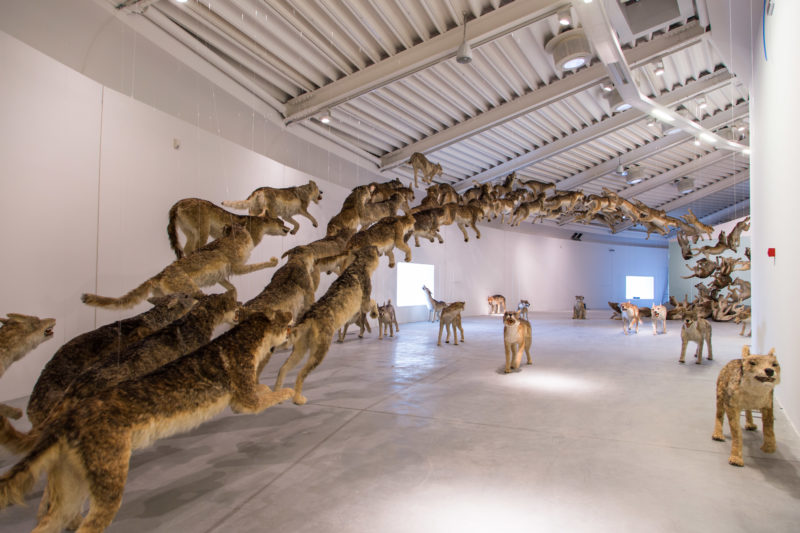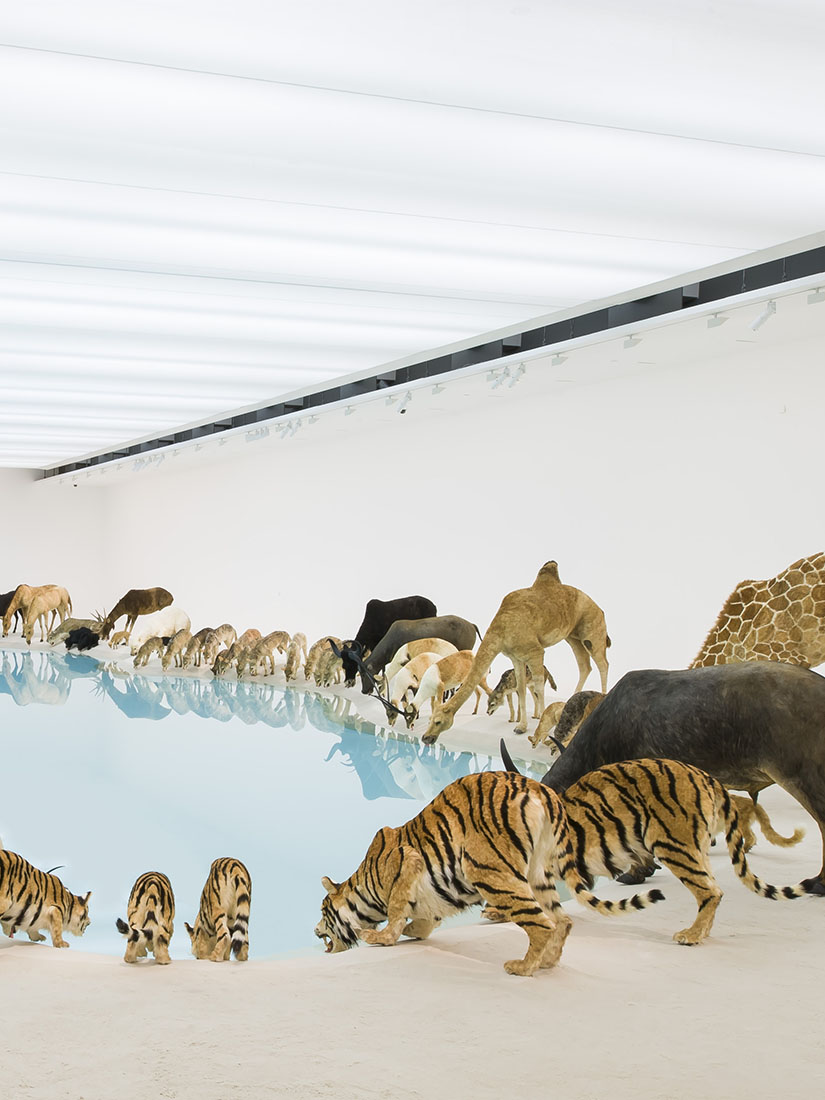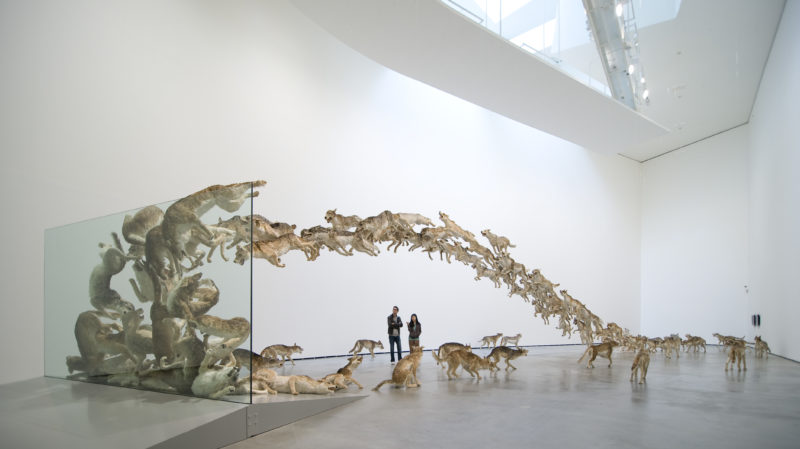
Introduction
Berlin 1, Singapore 2, New York 3, Bilbao’s Guggenheim 4, and Brisbane 5 are just a few of the locations in the world that have had the pleasure of experiencing Cai Guo-Qiang’s 6 installation Head On (2006). For his dramatic and impressive installation, Cai, who resides in New York, chose to fit 99 life-like stuffed wolves into a glass wall. The stuffed wolves appeared to push towards a transparent wall relentlessly crashing with full force against the glass barrier, while the rest of the animals behind continue surging forward valiantly and undeterred.
It was created in 2006 for his solo show of the same name at the Deutsche Guggenheim in Germany’s capital, Berlin. Speaking about this installation, the Chinese artist said:
My goal was to create art that would initiate a dialogue.
Preparation
Cai toured museums, the remains of the infamous Berlin Wall 7, and Checkpoint Charlie, which was a heavily protected point of transit between West Berlin and East Berlin.
In preparation for the installation of Head On, Cai created small cay versions of the wolves along with drawings that crystallized his whole concept.
On 11 July 2016, he irradiated Berlin’s evening sky at 9:30 P.M by igniting a small house filled with explosives such as rockets. This impressive display of fireworks and the resulting implosion symbolically cleansed Berlin’s city from its harrowing 20th-century political climate.
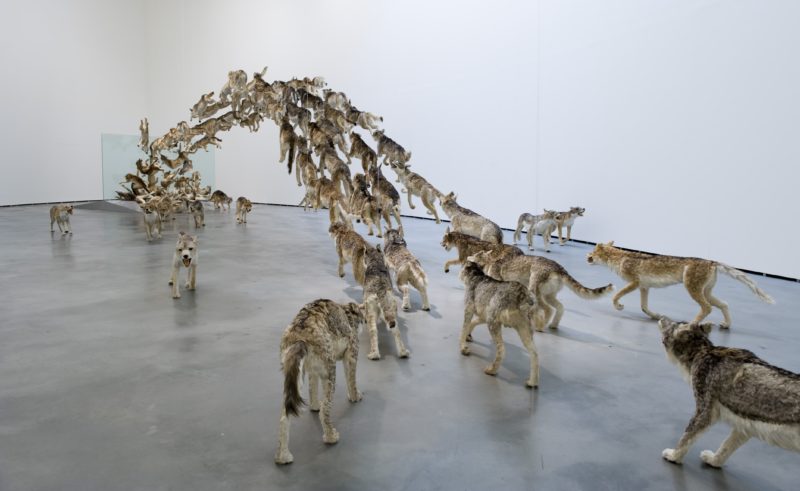
What the wolves represent
The exhibition aimed to bring to light the profound and intractable underlying historical issues between former West Germany and East Germany, despite the Berlin Wall coming down more than 30 years ago and reuniting the two factions.
While the installation was inspired by Berlin’s rich and tortured history, the message exposed was valid for everyone. Cai wanted to portray the universal human tragedy resulting in our urge for upward mobility and advancement. The wolves were designed to echo the human spirit of relentlessly trying to attain an objective without compromise.
How the installation was produced
Striking in its significant size and the emotions that the piece evokes, the wolves featured in Head On were constructed from a combination of metal wires, hay, and painted sheepskin. The beginning of the piece started with a few stray wolves casually joining more wolves headed in the same direction.
Along the length of the transparent barrier, the wolves appeared to gain momentum and rise in a tight pack, which created the illusion of one long stream of moving wolves. The stream, which was suspended 8 above the head of the audience, also appeared as though it was crashing forcefully into a plexiglass wall located on the opposite side of the room.
Cai Guo-Qiang also enlisted the principles of the ancient art of feng shui (the contemplation of energy fields) when creating the installation.
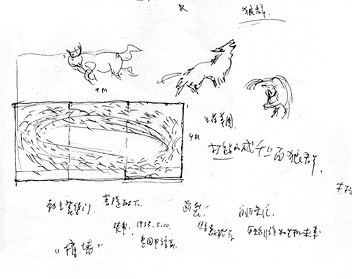
Where Head On was produced
The wolves were created in Quanzhou town in Fujian Province 9, which is Cai’s native town. In this installation, the craftsmanship is met with modern technology and art, creating an irresistible aesthetic excess despite its ostensible simplicity.
Here, everything is in motion. Nothing obstructs anything. Even the documented echoes of the explosions have just about precise volume. The plexiglass towards which the pack of wolves and the audience is heading is barely noticeable at first.
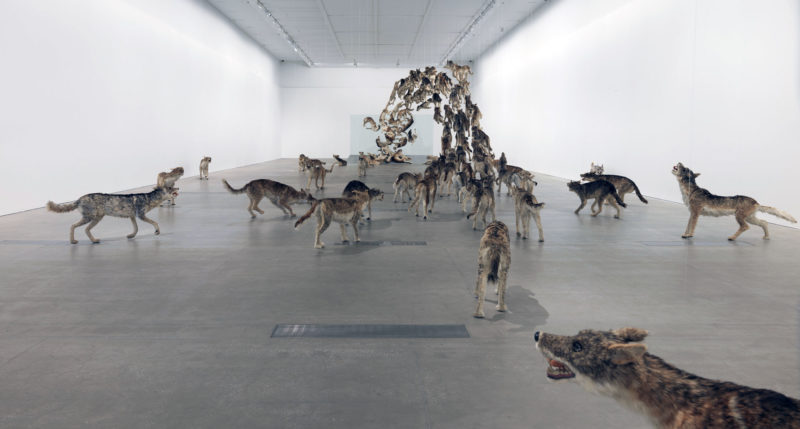
Why the wolves looked so realistic
The wolves differ in shades of fur, stance, gender, and facial expression. To make their expressions of the wolves seem realistic, Cai used plastic for the faces and marbles for the wolves’ dark lifelike eyes. The expressions on their faces and the tension in the bodies are what helped to contribute to the illusion that the wolves were running in one direction deliberately. The wolves’ ears were intentionally laid back, mouths were open, and the teeth and tongue were exposed, just like wolves running in a realistic setting would. This was meant to create the impression that the wolves are rushing headlong towards something. All this resulted in the wolves appearing real.
Video: Cai Guo-Qiang speaks about Head On
1 min 21 sec
Vortex, 2006 (gunpowder painting)
Vortex, 2006 (gunpowder painting)
Upon entering the room, the audience is left searching for information about the installation. There is only a small label-like letter that reads:
- Head On (99 wolves, resin, dyed sheepskin, straw, wire, marbles);
- Illusion II (two-channel video projection, 8.48 minutes on a loop, editor Lauren Petty, videographer Araki Takahisa);
- Vortex (9 by 4 meters gunpowder drawing)
Cai created the film Illusion II and Vortex, one of his gunpowder paintings, to accompany the installation.
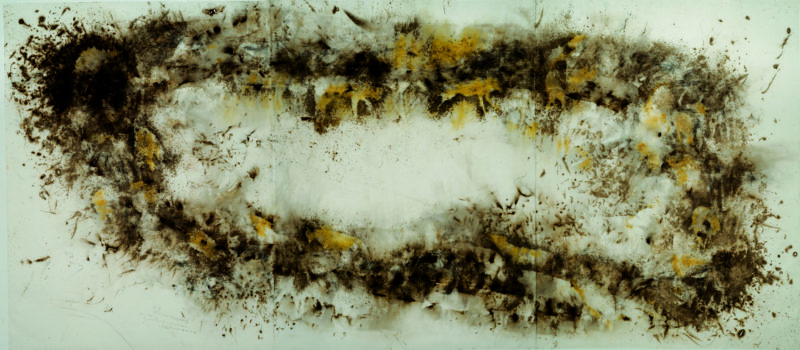
At the entrance of Deutsche Guggenheim, Cai burnt three sheets of paper positioned side by side on the floor, engulfed in gunpowder, cardboards, stones, and cut-outs of wolves. After the black smoke ended, a delicate composition appeared riddled with singed spots, burned holes, and ashes.
Vortex video
Illusion II: Explosion Project, 2006
To create Illusion II: Explosion Project, a small family home was built in the famous Babelsberg film studio, according to Cai’s specifications. The studio is known for classics such as Metropolis by Fritz Lang and fascist films.
The house was then torched on an isolated space against the remnants of the ill-famed Anhalter train stations, bombed during World War 2. Therefore, it served as a picturesque background and a historical symbol for the Berlin Wall, which ran just a few meters from the sight.
Cai said:
The empty site invited what illusion is about: a reflection on the contradictory powers of violence, beauty, and destruction.
Cai used fifteen cameras to record the explosion, which took 18 minutes. The short film accompanying the installation was edited and projected, particularly above the abandoned wolves. Each DVD displayed a different perspective of the explosion, from flames trouncing the roof’s wooden beams to motifs painted by the flairs in the night’s sky.
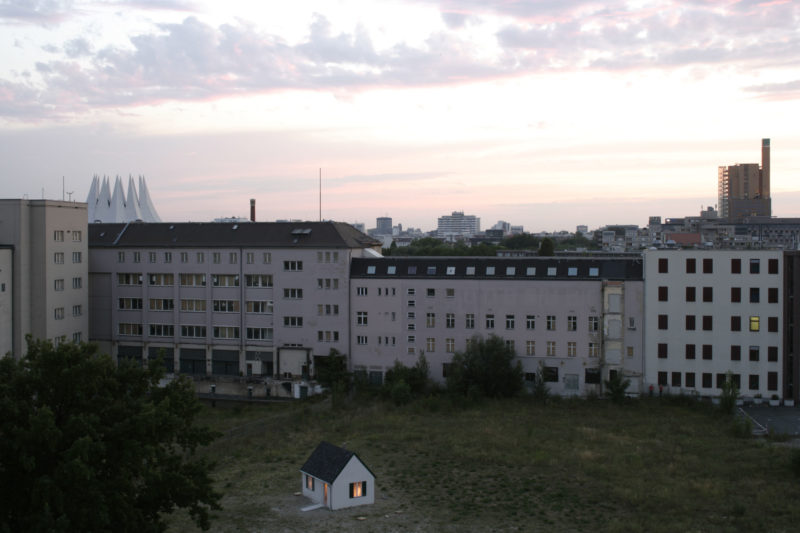
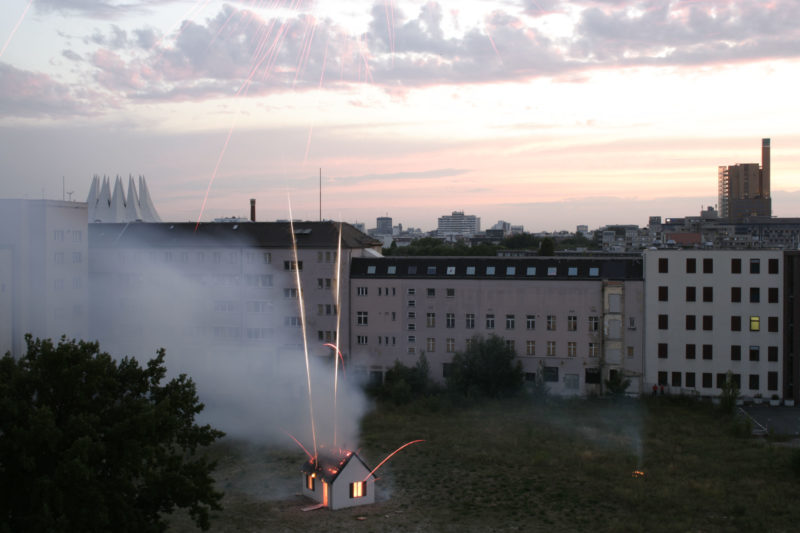
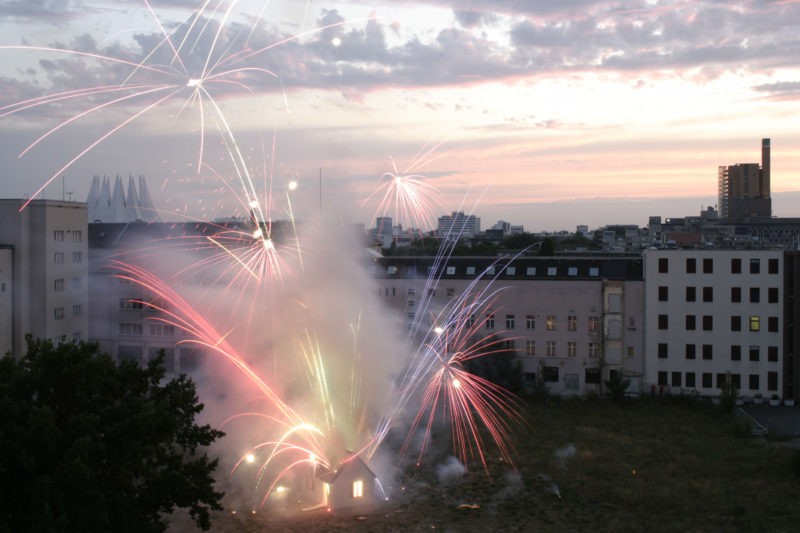
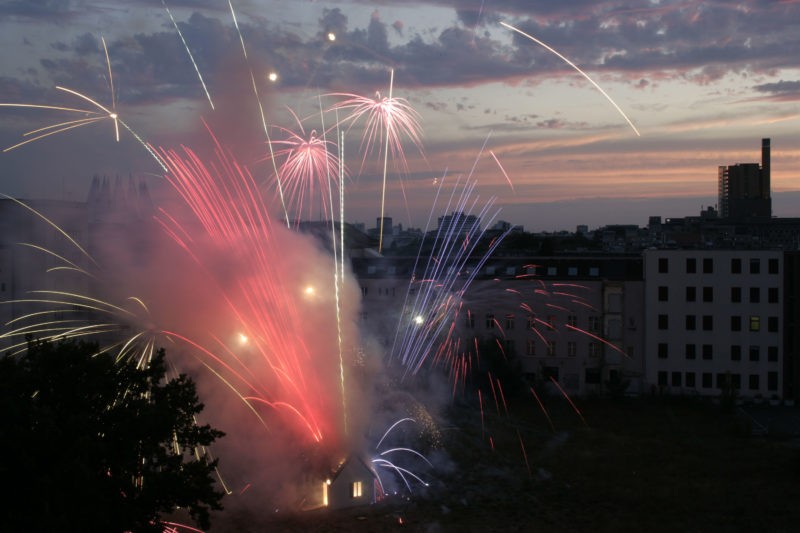
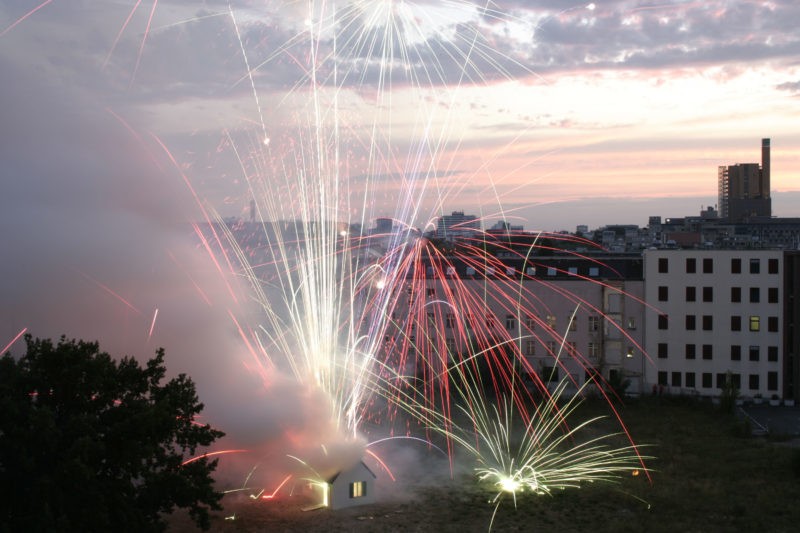
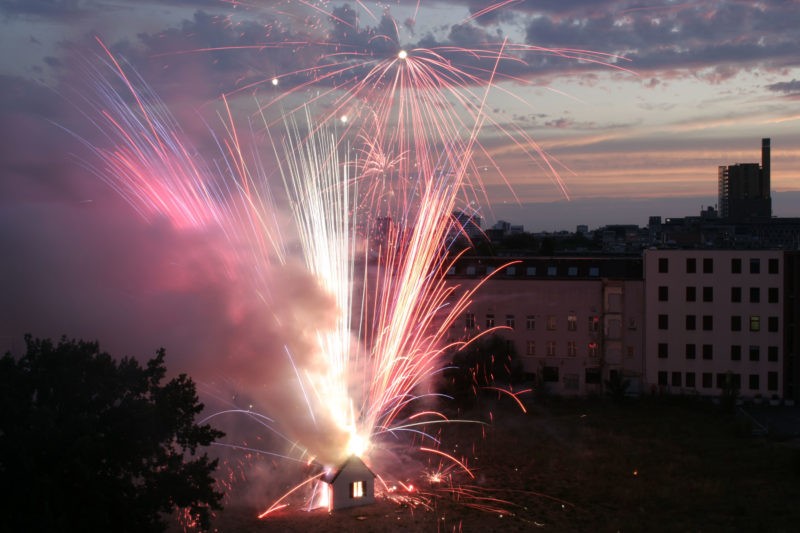
Analysis
Having placed by the exhibition’s entrance, Vortex was supposed to be the show’s centerpiece, but the pack of wolves stole all the attention.
The leaping pack of wolf resembles a formidable and powerful bow. Their ferocious courage and warrior-like camaraderie spirit can be seen as reminding the audience that humans are easily blinded by a communal mentality and action. They are bound to repeat the same mistake over and over again despite the history of negative results, to a nearly implausible degree.
Walking along beneath the pack, you soon realize that this aesthetic wave of animal power is charging towards destruction. Of the 99 wolves, 22 are either already dead or dying after running into the wall. Bodies are distorted, necks broken, faces distorted in anguish, and limbs twisted.
The show’s message was simple and straight to the point; human beings must live together and care about the planet and each other if the planet is to survive. Additionally, since the Deutsche Guggenheim commissioned the piece in Berlin, Heads On was also a metaphor that was central to understanding the Berlin Wall and its effect had on the country. Heads on is definitely a captivating piece where all the wolves’ realistic appearance helped to transport audiences into the strange and unfamiliar world.
